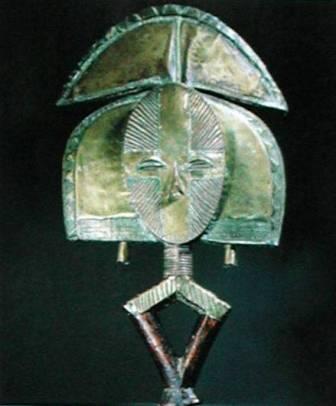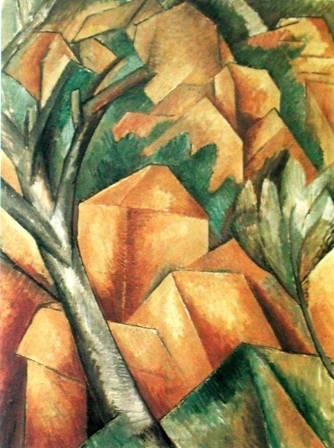 |
| HOME | GLOBAL | DISTRICTS | CLUBS | MISSING HISTORIES | PAUL HARRIS | PEACE |
| PRESIDENTS | CONVENTIONS | POST YOUR HISTORY | WOMEN | FOUNDATION | COMMENTS | PHILOSOPHY |
| SEARCH | SUBSCRIPTIONS | JOIN RGHF | EXPLORE RGHF | RGHF QUIZ | RGHF MISSION | |
|
|
|
Joseph L. Kagle, Jr. Peace Essays
|
|
Take any day in history. Take a day at random where ordinary things happen. Sometimes the smallest actions have consequences for a century. A Chinese proverb says that you can move a mountain one small stone at a time. This kind of day happened in Paris at the beginning of the 20th century. Picasso and Matisse had gone to African exhibitions in 1904 and 1905 and discovered that there was a whole continent of art that did not adhere to the European standards for excellence. Yes, both artists knew instinctively that this was exceptional art; these were ideas that had found their time in French and European history. What happened on this day, and other days that followed, changed the 20th century for everyone. Peace starts that way too. One small action is followed by another then another then another….and eventually you have a new world in which to breath the air of freedom. An Ordinary Day in Paris
A DAY IN PARIS, 1907, PICASSO'S STUDIO ON 13, rue RAVIGNAN
There are moments which stretch across the landscape of time and color all action, all thought processes. There are moments which are still not understood or appreciated although they are the root of decisions for centuries. For our epoch, one such milestone in time happened silently in Paris in 1907. Only the artists and a few close friends knew about this confluent moment. The times had made it a reality. In the 1930's, Paul Baker brought the outcome of the moment back to Waco and Baylor University Drama Department. Still later, he spread the moment to Dallas, San Antonio and all of the nation. Robert Wilson let the moment become part of his being as a young boy in one of Baker's Waco classes and took the synthesis back to the world while reshaping theater in the last half of the twentieth century. Picasso was one of the first agents of the synthesis. Three great cultures came quietly rushing together as a combination statement: Western, Oriental and Tribal. James Joyce was right. The East will shake the West awake.
The sun through the high windows of the dilapidated studio brought the Cubist, African-looking women of Picasso's new painting alive, as the other older, painted figures seem to sleep and await the total light of day. Picasso wakes but stays on the bed, watching the march of sunbeams across what will be called, Demoiselles d'Avignon. It is a large painting in a totally new manner for the French art scene. Even the other artists who showed in the First Cubist exhibition in Paris would not totally understand what they saw in this small studio. Other paintings were stacked along the other three walls, works from what the critics called "The Blue Period", "The Pink Period" and early experiments with Cubism, working in the style of Cezanne. Cezanne is much upon his mind, with the whole artistic community attending his funeral last year. He stretches, touches Fernande and compared her face with the two Iberian sculptured heads he purchased from Apollinair's secretary, Gery-Pieret. It is rumored that they are stolen from the Louvre. "I hope that the theft is not true but it fits the man. Today, I will work again on my African ladies," he thinks, pushing the sleep away from his mind. "I will visit the African exhibition at the ethnographic museum at Palais du Troceradera. Derain and Matisse have begun to collect it? Maybe I will some day! The images demand and command my attention. They seem to push the Renaissance from my consciousness.”
He picks up a brush and attacked the surface with a gusto that he reserved for the pursuit of a new lady-love. All of Montmarte is waking. The craftsmen in the neighborhood are just beginning their ten hour day. The sounds of the city are coming alive. Picasso paints, laughing to himself. Braque had visited the other day and said, "Looking at your painting is like drinking gasoline and spitting fire." It was the affect that he strove to achieve, to push other artists out of their comfortable, European, limited point of view.
Later in the morning, he visits the Salon des Independent's exhibition. There is a large Derain "Bathers" and Matisse "Blue Nude" that challenges his eye. Later, he walks through the Cezanne retrospective of 79 watercolors at Bernheim-Jeune Gallery and meets the art dealer Kahnwieler. Little does he realize the impact that Kahnweiler will have upon his future fame. After lunch at a small bistro, he walks to the newsstand and reads the highlights of that day. There is an "open door" agreement on China between France and Japan. The US President, Theodore Roosevelt, bars Japanese from immigrating to America. A peace conference is being held at The Hague. That rogue, Rasputin, is gaining influence at the Russian court. There is a panic in America, a run on banks. Some wealthy banker, J. P. Morgan, imports $100 million in gold from Europe to stop the run. "Will those fools in America never learn?" he muses. "Oh, good, Rudyard Kipling has won the Nobel Prize for Literature", Picasso states to the world, tilting his beret to one side.
In the bookstore, Joseph Conrad's new publication, "The Secret Agent," is prominently exhibited. A poster proclaims: "Symphony hall, a new work by Gustave Mahler, "Symphony No. 8 in E.-Flat major". It is being nicknamed "The Symphony of a Thousand". On the entertainment page of the paper, the Ziegfeld Follies opens in New York. "Will they never stop stealing ideas from the Moulin Rouge?" Picasso thinks as he strolls the boulevard. To his exploring eye, everything is new around him. "Why not new ideas in art?" he asks himself. "Just think the Lusitania" broke the record for transatlantic travel in 5 days, 45 minutes. Carl Hagenbeck opens his modern zoo in Hamburg-Stellingen. Crown Prince Louise of Sachsen, divorced on the grounds of adultery four years earlier, now marries an Italian Violinist Enrico Toselli. France will send its best team ever to next year's Olympics in London." "I will go to the beach on the Rivera instead," he says out loud. No one notices his statement but they do turn to notice this short, muscular artist commanding the boulevard with his purposeful stride.
In another store window, there are fountain pens in neat rows. Some say that they will catch on; some say that these new pens will never catch France's imagination. Writing is too important to bastardize it with fountain pens. In the same window, there is a picture of the new president, Armaud Failieres. There is an article pinned to a board. It is the news of Alfred Dreyfus' rehabilitation last year and a photo of the first Grand Prix. Picasso knows that this new century will be one of wonder and great happenings. Just look, he ponders, 1906 had been a banner year for the arts. An American book, "The Jungle" by Upton Sinclair, has forced a scandal which leads to the American government creating something called, the U.S. Pure Food and Drug Act. "Chicago's stockyards could be no worse than what we see here", Picasso thought. "I will bring it up when I meet Hemingway at Gertrude Stein's party tonight".
Picasso and Fernande Olivier, his present mistress in her stylish large, black hat, make their grand entrance to the Stein apartment. It is a special evening party at 27 rue de Fleurus. Normally the soirees are held on Saturday afternoons. Small talk and hors d'oevures fill the room. The conversation is all about politics in one corner: France and England agreeing on Siamese independence; philosophy in another: a discussion of Henri Bergson's "L'Evolution creatrice", William James' "Pragmatism" and the Papal encyclical condemning modernism; science in a third, Pavlov's recent researches into conditioned reflexes; and art/poetry all over, with Gertrude Stein holding court, with her companion/lover, Alice B. Toklas, on fragmentation in modern art. Many things are happening outside this small apartment but the guests do not discuss them. No one mentions that this day is the first Mother's Day or the first comic strip is created, "Mr. Mutt" (later "Mutt and Jeff') or the Boy Scouts are founded. This night is for high ideas and a discussion of new loves, new cinema (particularly the invention of slow motion) and new visions.
In bed with his arm around Fernande, Picasso falls asleep and dreams of African women. He sees Matisse's unfinished "Dance", wondering how his new creation, Demoiselles d'Avignon, will be accepted in the artistic circles he respects. He is continually compared to Matisse, his gentle rival. Also, somewhere in his mind, he laughs to himself, thinking: "How many will know that the 'Avignon' in my radical creation is a street for prostitutes in Barcelona instead of the French Avignon? He is glad that he painted over the sailor last week. The prostitutes will be my personal joke with my friends. Who cares except me?" Even as he turns in sleep, the semi-dark blurs the hard edges, the slashed colors and the Cubist fruit on a stand in his new creation. All that is left of this day in Paris is the thin smile on Picasso's lips.
He does not know that this revolutionary painting will only be seen by friends and acquaintances in his studio until it is shown to the general public in "Art Moderne en France" at the Salon d'Autin, here in Paris, in 1916. He certainly does not know who his new "mistress of the household" will be in the future. All that is important is the painting and his mistress of the moment.
|
| RGHF peace historian Joseph L. Kagle, Jr., 31 August 2006 |



